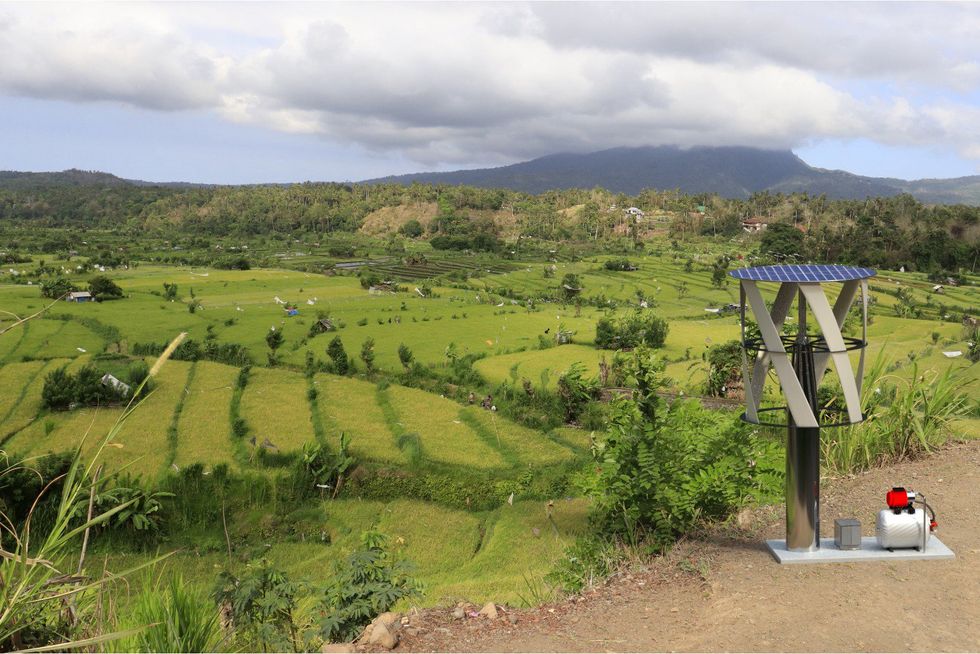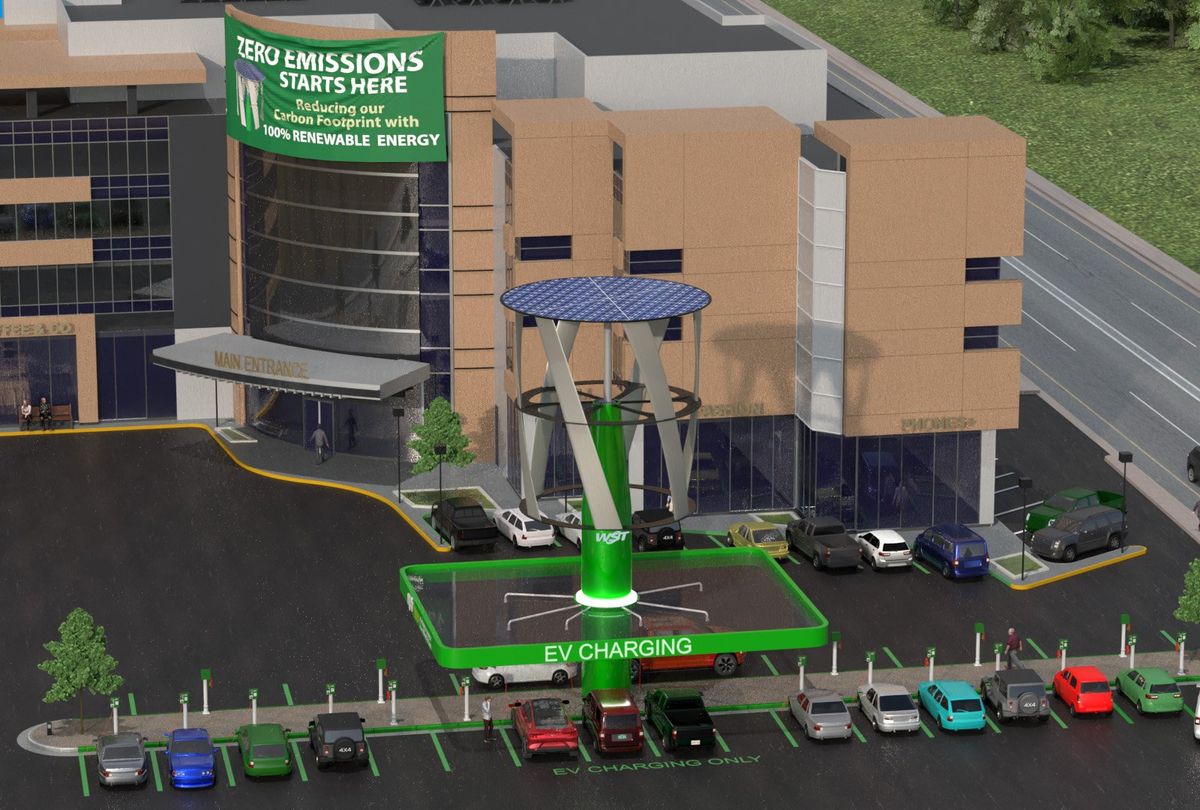The world’s transition to electric cars sounds daunting enough, without even considering upstream challenges such as beefing up a creaky electric grid and connecting that grid to a U.S. national target of 25 million EVs by 2030 (and a similarly ambitious set of goals worldwide). So, to that end, a simple-yet-patented idea has been spun up to create an ultrafast EV charger—powered by wind and solar—that has no grid connection whatsoever.
New York-based engineer and inventor Jim Bardia showed a scale model of his Wind and Solar Tower at Detroit’s North American International Auto Show this week. The idea sprouted from Bardia’s original dream of providing clean, reliable electricity to farmers in the global South or any off-grid region, in a world where 775 million people still can’t access reliable sources of electric power.
The tower’s developer says its projected price—4 cents per kilowatt-hour—could make it easy to offer low-price or even free charging to attract roadside customers.
Bardia’s tower combines a vertical-axis wind turbine (VAWT)—flipping the familiar windmill-style, horizontal-axis machines 90 degrees—with solar panels affixed to the turbine’s wing assembly. Bardia said that “egg-beater” orientation is always pointing into the wind, versus windmill arrangements that have to be rotated as the wind direction changes.
“Those horizontal machines also can’t take advantage of wind gusts, which adds up to a lot of lost kinetic energy,” Bardia says.
A patented “levitation hub” takes its cues from maglev (magnetic levitation) trains, integrating permanent magnets to virtually eliminate static and dynamic loads. The wing assembly floats and rotates with near-zero friction. When wind abates, an attendant flywheel effect keeps the turbine rotating for longer periods.
“There’s an actual air gap, and all the weight pushes down on the top of the tower like a giant thrust bearing on top,” Bardia says.
Solar panels integrate radial fans to cool the underside of voltaic cells. Their tilted surface spins off the morning dew to keep dirt at bay and sharply reduce ongoing maintenance. Bardia—a mechanical engineer who spent his earlier career building armored cars, limousines, and race cars—said the self-cleaning function boosts the tower’s electrical performance by 38 percent.
The turbine assembly connects via a drive shaft through an eight-speed sequential transmission, and powers a generator with a claimed efficiency above 90 percent. That digitally controlled transmission helps the tower generate electricity in winds as low as 8 kilometers per hour, and keeps it working in winds as fierce as 120 km/h.

The proposed towers would be about 24 meters tall, with a 10-meter rotor assembly. The scalable system can house 1 megawatt of batteries for power storage, ideally using EV batteries repurposed for a useful second life. The breeze and sunshine combined can generate 70 kilowatts of continuous power, or roughly 234,000 kilowatt-hours per year—enough to let EVs cover 1.3 million km at a typical consumption of about 5.6 km per kilowatt-hour.
“It’s like a little hybrid power station, with two big trickle chargers,” Bardia says.
The tower can then deliver a charge of up to 380 kW, more than even the most-robust 800-volt architecture that EVs can currently accept, with no grid connection or snarky questions about coal or other fossil-fueled sources of generation. Currently, virtually every watt of added renewable capacity to the grid requires redundant backup from fossil-fuel generation for when the wind doesn’t blow or the sun doesn’t shine. The towers could ease that need, and do it more cleanly and efficiently, Bardia says. Some further points, he says, in favor of direct off-grid charging include:
- More than 60 percent of the grid’s energy is generated from coal, oil, and natural gas.
- Power plants are inefficient. According to the U.S. Department of Energy, more than 60 percent of energy used for electricity generation is lost in conversion.
- Current DC fast charging requires vast amounts of power over a short period of time. The power needed for a single Level-3, 480-V charge is equivalent to the grid load of 50 houses during that charging time.
In other settings, such as urban and retail locations or highway corridors, the towers could still tie into the grid to sell supplemental power. That arrangement would bring another key advantage: Because of its slow-but-steady generation, a tower could link to the grid with 240-V, single-phase power that’s available anywhere and everywhere, rather than paying to upgrade and install pricy 480-V, three-phase power.

- The EV Transition Explained: Charger Infrastructure ›
- British Highway Will Recharge Your Batteries as You Drive - IEEE ... ›
- Flying Kites Deliver Container-Sized Power Generation - IEEE Spectrum ›
Lawrence Ulrich is an award-winning auto writer and former chief auto critic at The New York Times and The Detroit Free Press.



